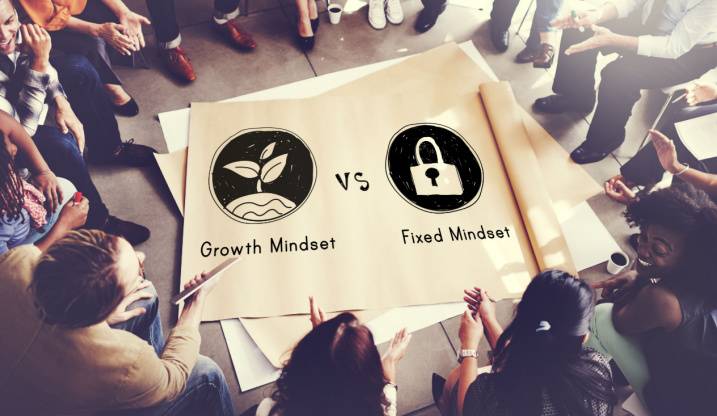Have you ever thought to yourself, “I don’t think I can do (insert task here). I just don’t have the natural abilities for that”? I know I have. In fact, just recently I was lamenting to some colleagues about a challenging assignment I worked on and how I struggled because I just wasn’t “wired” to do it.
My fixed mindset added to the difficulty of the situation, and it made me feel defeated before I even started. Similarly, when leadership operates with a fixed mindset for their organization — working under the assumption that people’s intelligence and abilities are static and unlikely to change — it can cause management to overlook some job applicants for hiring or certain employees for projects simply because they do not already possess the hard skills or experience. This can cause a company to miss out on potentially stellar performance and outstanding contributors who just need the opportunity to shine.
Growth mindset to the rescue!
Growth mindset, a term coined by psychologist Carol Dweck, refers to believing that one is not constricted or limited by innate characteristics but that they can learn, improve, and (like the name says) grow. Leaders who foster a growth mindset within their company are apt to focus on people’s potential to grow rather than confining them to certain tasks or positions based on their current abilities.
Additionally, a growth mindset encourages managers to assess employee performance based on effort and creativity, not solely output. They allow individuals to come up with new ideas, give them the freedom to try them out, and don’t penalize them if the ideas do not work out.
When companies put a growth mindset into practice, they can see benefits like:
- Increased trust among colleagues since employees are not focused on proving themselves, hiding their “deficiencies,” and viewing their coworkers as competition
- Stronger employee commitment to the organization because the company supports and encourages their staff’s development
- More employee comfort with innovation due to the organization’s support for risk-taking
- Enhanced morale rather than feeling that just a few “star” employees are valued
Transitioning from a fixed mindset to a growth mindset takes intentionality and commitment from top leadership. And you cannot force every employee to adopt a growth mindset about themselves, especially if they’ve been viewing their abilities with a fixed mindset for a long time. Because of the many benefits a business and its employees can experience, though, here are some tangible ways to start fostering a growth mindset within your organization and among your staff:
1. Focus on Internal Talent Before Hiring from the Outside
No, I’m not talking about quiet hiring but rather proactively looking for opportunities to coach and develop employees to move into new positions — either those roles that need to be filled immediately or looking ahead at career succession planning. Take notice of people who demonstrate a desire to learn or to take on new challenges and give them the chance to broaden their knowledge and skills. This brings us to…
2. Invest in Learning & Development and Employee Upskilling
With the lack of professional development being a major reason why employees leave their jobs, it’s vital for businesses to prioritize the development and advancement of their employees. People want to stay with companies who believe in their ability to take on new responsibilities or move up within the business and who offer the training necessary to do so. Recognizing the potential in your employees and offering them opportunities to live up to that potential increases employee engagement and retention.
3. Understand What Makes Your Employees Tick
It’s a great thing to show that you believe in your people by offering coaching, mentoring, and training. But giving opportunities that align with your employees’ natural behaviors is the icing on the cake. Sending a very low-key, conflict-avoidant person (tall column 2 on the Omnia Assessment) to sales training is not likely to result in that person becoming an aggressive, competitive, tall column 1 sales machine — no matter how much encouragement you give them. And in reality, it might backfire in a big way. (Speaking as a highly cautious, risk-adverse person myself, that scenario reads like the stuff of nightmares.)
Knowing how to target each employee’s growth is vital, and using employee development assessments, like Omnia’s Professional Development Report, can help you uncover the individual behaviors and motivators that drive each person on your staff. Coaching a cautious team player toward sales or other risky roles might not work but knowing that this person thrives when helping others can point you in the direction of growing their service skills, promoting them into a senior customer account manager position, and eventually advancing them into a team lead who mentors colleagues and helps them to grow their own skills.
Omnia is in the business of not just helping businesses hire right the first time but also helping them ensure their employees are engaged, productive, and continually developing (just look at our tagline!) Contact us today to find out all the ways we can help you grow your mindset — and your team.























